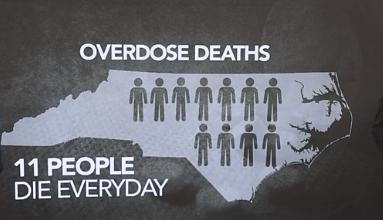“Deadly Crisis Unveiled: The Shocking Rise of Xylazine in Illicit Drugs Threatens to Overwhelm Vermont’s Addiction Recovery – What You Need to Know!”

BURLINGTON, Vt. — Crisis “Injecting a horse tranquilizer and expecting no consequences is unrealistic,” emphasized Ty Sears, 33, a former drug user now in recovery, highlighting the dangers of xylazine, an animal sedative seeping into the illicit drug market and contributing to a surge in overdose fatalities.
READ: How To Order Hemp Flowers From An Online Business In The USA?
Sears, who divides his time between Burlington and Morrisville, speaks from experience. In Burlington, he engages with groups of drug users, providing water, food, and support. Having battled addiction, served time, and struggled with treatment, he now faces a new threat: first, the potent fentanyl, and now, xylazine, known for causing life-threatening wounds and sores.
Crisis
Despite Sears’ efforts to persuade those affected by these drugs to reconsider their choices, many claim an inability to break free from the cycle. “They say they’re unable to get out of it — that they don’t have a plan to get out of it.”
Compounding the issue, individuals seeking assistance in overcoming addiction confront challenges due to the prevalence of fentanyl, xylazine, and other synthetics. Vermont’s innovative Hub and Spoke program, launched in 2012, faces significant hurdles as these substances undermine the effectiveness of addiction medications.
Hub and Spoke places prescription medications at the core of the treatment strategy, with methadone offered at regional hubs for severe cases and smaller clinics providing care, including buprenorphine for opioid withdrawal. However, these medications prove less effective against fentanyl, and commonly used doses can induce violent withdrawal. Neither Suboxone nor methadone addresses addiction to xylazine or stimulants.
The Centers for Disease Control and Prevention reports over 111,000 drug overdose deaths in the U.S. in the 12 months ending in April, with more than 77,000 involving synthetic opioids like fentanyl. Vermont, experiencing a surge in cocaine and methamphetamine use, witnesses the escalating crisis.
The Hub and Spoke program, part of Vermont’s Blueprint for Health, operates through hubs in populous areas, transferring stable patients to spokes for ongoing care. The model supports primary care practitioners in prescribing addiction medications. However, the flexibility of the model is tested as fentanyl and xylazine challenge its effectiveness.
With xylazine implicated in nearly one-third of opioid overdose deaths in Vermont, and fentanyl in about 96%, the state faces an unprecedented challenge. Advocates call for increased funding for contingency management and broader access to methadone as an alternative to buprenorphine, which struggles against the potency of fentanyl.
The goal is to prevent patients from traveling long distances for methadone, but federal restrictions pose a barrier. Advocates stress the need to make methadone more accessible, emphasizing its safety and efficacy.
As the crisis evolves, advocates urge quick allocation of more resources. For Sears, who has successfully navigated recovery, the support he received was crucial. Glimpsing hope at the end of the tunnel requires a diverse set of options to combat the changing and deadly crisis.
“It’s almost like our understanding is changing from really seeing this, on a social level, as episodic to seeing it as chronic,” noted Erin O’Keefe of the Howard Center Safe Recovery program, emphasizing the need for evolving approaches as the drug-supply landscape shifts.






